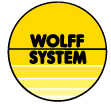 Why are some lamps bi-pin and others RDC?
Why are some lamps bi-pin and others RDC?When indoor tanning came to North America, Friedrich Wolff sought a US lamp manufacturer with capability and capacity. The European tanning industry was already up and running, and the typical commercial lighting system in Europe was then, and is still today, pre-heat. US lamp makers produced large volumes of 6' commercial fluorescent lamp in a rapid start design with RDC bases in response to the US market whose commercial lighting systems were predominantly rapid start. US ballast manufacturers produced millions of 2-lamp rapid start ballasts for this commercial lighting market. The infrastructure was in place, but the "systems" differed from Europe to North America.
Early sunbeds produced and available in the US employed F73/RDC sunlamps operated by 2-lamp rapid start ballasts because the domestic manufacturing capability supported this path. European sunbed companies were not yet exporting their equipment to the US; they were busy filling European demand for their products.
Over the years, European influence on US products was felt in two ways:
- Some German companies began exporting sunbeds to the US market
- Some US companies adopted the pre-heat system due to its cost characteristics and other factors
Today the majority of sunbeds available from any continent employ pre-heat systems and F71 bi-pin sunlamps. Physical and electrical characteristics for same-style ballasts and lamps are identical throughout the tanning world.